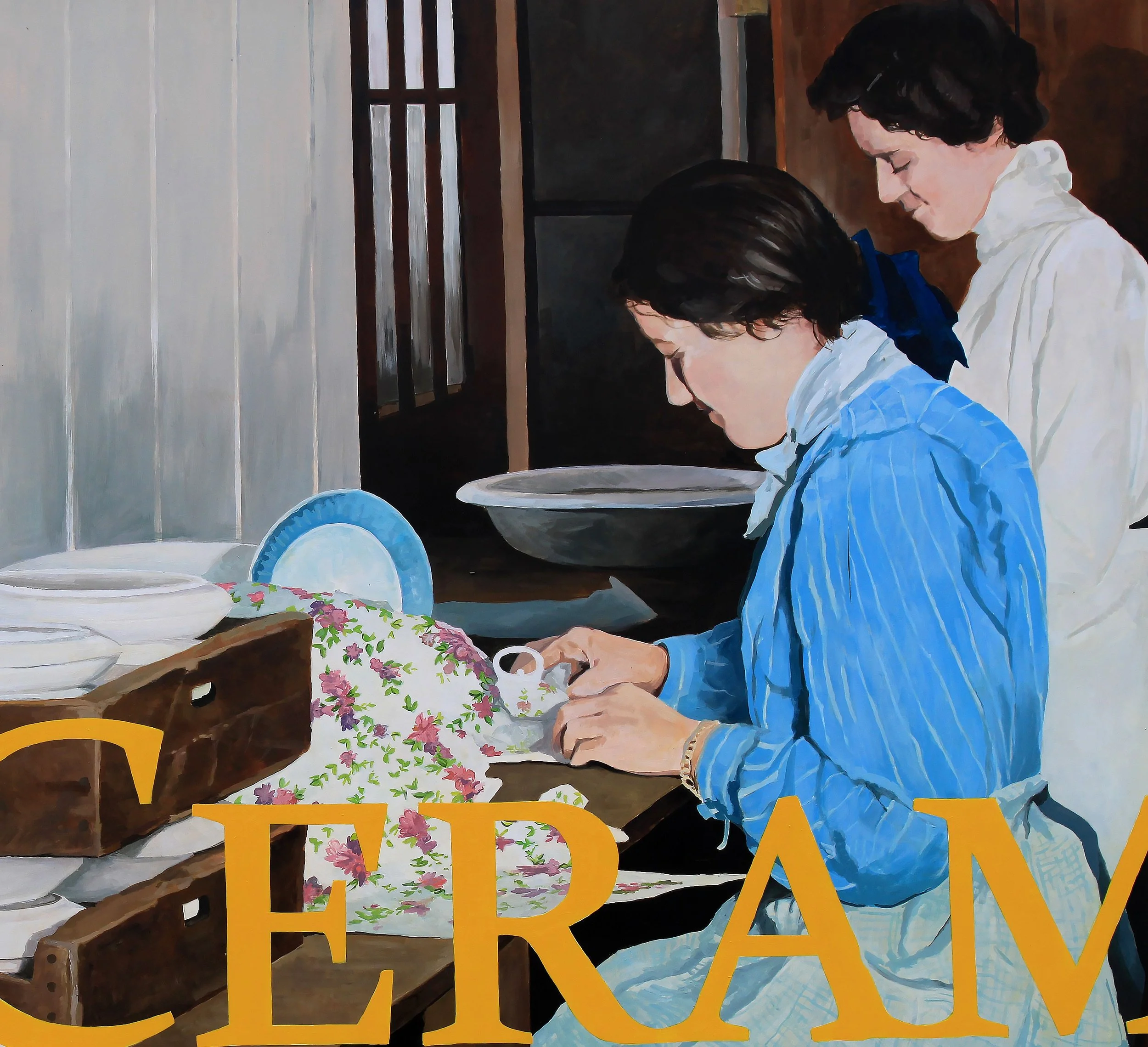THE WOMEN’S STRIKE
Along Broadway Street, the Museum’s mural depicts female potters at work in a decorating shop doing a process called decalcomania. By 1910, women made up 36% of the pottery workforce and were paid less than the male workers in the same department. On March 23 of that year, 41 female potters walked out of C. C. Thompson, Hall China, William Brunt Pottery, and D. E. McNicol in a ten-day strike that closed nearly all the 35 operating potteries in East Liverpool, Wellsville, Chester, and Newell.
The women, workers in the bisque warehouse and dipping departments, asked for a raise from $.96 a day to $1.10 and for a fifteen minute lunch break. By March 29, over 600 women were striking and every pottery, except the Standard plants No. 1 and No. 2, had ceased operations. Only decorating and shipping departments stayed open. On April 2, the Evening Review headline was “Girls Back in Ranks of Workers: City Made Happy by Settlement of Strike.” The per day wage agreement was: Bisque Warehouse Women, $1.05, Stampers and Dippers. $1.10, Drawing Girls, $1.00 per kiln day. A fifteen minute lunch break was granted at factories that did not have one before the strike. After accepting the terms, the women met and formed an independent union called the Ladies Independent Order of Pottery Workers of East Liverpool.
